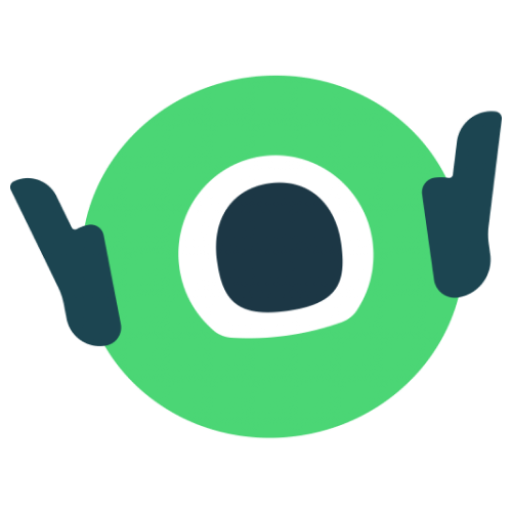Building an effective team requires assembling the right blend of personalities and capabilities that complement each other while also strengthening the collective whole. As a hiring manager, you need interview questions that help you find candidates that align with the role’s responsibilities, as well as culture fit.
Why? Because employees who feel strongly connected to their organization’s culture are 4x as likely to be engaged at work than those who don’t; they’re also 62% less likely to feel burnt out. Additionally, assessing culture fit can help facilitate diversity, equity, and inclusion (DEI) at work.
In this guide, we’ve gathered the most important tips and considerations for interviewing for culture fit to help make your assessments more fair and equitable. Here’s what you’ll find:
- What is culture fit?
- What culture fit is not
- Why is assessing culture fit important?
- Five keys to assessing culture fit
- Fifteen interview questions for culture fit
- Assessing culture fit gets easier with the right tools
What is culture fit?
Culture fit is a concept used to assess a candidate’s compatibility with a company’s culture, e.g. the values and behaviors of people within a specific organization. Culture fit can also be used to evaluate suitability at the team level by referencing a team’s credo or charter document.
What culture fit is not
The premise of culture fit is that if an applicant shares similar work-related values and characteristics as an organization or team, they’ll be easier to onboard, retain, and train.
Work-related values should not be confused with personal characteristics that the Equal Employment Opportunity Commission (EEOC) has deemed illegal to discriminate against in the United States: race, skin color, religion, sex (including pregnancy, childbirth, or related conditions, gender identity, and sexual orientation), national origin, age (40 or older), disability or genetic information. Culture fit also does not include only hiring people from a specific educational institution, training program, or former employer.
“Culture add” is a helpful concept to reduce the risk of perpetuating bias to personal characteristics that could lead to a sea of sameness, groupthink, and potential lawsuits. Culture add focuses on the qualities the candidate brings to the role that may be absent or undeveloped in existing team members. These could include enthusiasm, willingness to challenge the status quo, team development abilities, and so forth.
Culture fit is not a one-and-done list of qualities. Hiring managers can benefit by reflecting on past hires and documenting what qualities they are recruiting for now, rather than what worked in the past. Teams are not static; they exist in response to conditions that may be impacted by broader events at the company, industry, and global levels.
Why is assessing culture fit important?
Assessing candidates for culture fit helps identify people who will work well with your team and align with your company’s values. It can also help you focus on the personal qualities that matter to employee performance and support DEI initiatives.
Short- and long-term benefits of assessing culture fit include:
- Improved employee retention. 41% of workers left their jobs last year due to engagement and culture reasons; that’s 2.5 times as many as left for better pay or benefits (16%).
- Stronger employer brand. When employees form positive associations about a company due to its culture, they’re more likely to share those experiences and sentiments with their network and make referrals.
- Greater organizational adaptability. Prioritizing “culture add” facilitates more diverse and equitable hiring decisions, leading to workforces that are more resistant to major disruptions due to their adaptability, problem-solving skills, and flexibility.
Five keys to assessing candidates for culture fit
Similar to soft skills, there’s no universal way to quantify culture fit. Rather, you need to cultivate deep self-awareness and lean on your organization and team values (versus gut feelings) to ensure you’re making confident hiring decisions based on objective information.
1. Establish clear criteria
Begin by documenting the cultural attributes you wish the interview team to assess, such as relevant company and team values, adaptability, attitudes towards work, and personality traits. Add them to the interview scorecard, so the hiring team can track candidates consistently.
2. Ask open-ended questions to get real replies
Where closed interview questions result in yes or no replies, asking open-ended questions helps you draw out a candidate’s real feelings about a specific value, attitude, or attribute while tracking their nonverbal cues, such as body language and sincerity when answering.
3. Use a structured interview process
Structuring simply means asking the same questions of every candidate, in the same order, for each role. It allows hiring teams to split up questions based on their strengths or areas of expertise, spend the right amount of time on questions, and evaluate candidates more fairly.
4. Name your biases and manage them
One of the first steps for confronting your personal bias is to accept it exists. From there, you can take training your company might offer and read recommended resources from DEI experts. Last, but not least, remind yourself before every interview that your job is to stay focused on an individual’s alignment with your company’s core values, not your own comfort level.
- Pro tip: Use the “flip it test”
Ask yourself the following question. “If you were to swap out a candidate from an underrepresented background with one of your more typical hires, would you have the same reaction to that candidate?”
5. Use an interview scorecard to quantify results
Interview scorecards help standardize the evaluation of candidates. Each interviewer completes a scorecard for each candidate and once the hiring team compiles scorecards for every candidate, they compare rankings and identify the strongest candidates. See a template here.
Fifteen interview questions for culture fit
As mentioned above, the best type of interview questions for assessing culture fit are open-ended. Listen actively, ask follow-up questions, and don’t stop digging once you’ve determined they’re a fit; keep pushing to uncover information about what they’ll add as well.
Work style
- Do you prefer working alone or as part of a team? Why?
- Describe your ideal work environment.
- How do you prefer to receive feedback at work?
Core values
- What does work-life balance mean to you?
- What motivates you?
- Who inspires you and why?
Personality traits
- What’s a common misconception about you?
- Tell me about a time you were disappointed and how you handled it.
- Tell me about a time you were in a high-stress situation at work.
Culture fit
- Describe the environment in which you work best.
- Tell me about a time when you felt in sync with your team.
- Tell me about a time when you worked with someone who had a different way of approaching problems.
Culture add
- Tell me about a time that you challenged the status quo.
- How might you help make our workplace more inclusive?
- Tell me about a time you gained a new skill at work and what you did to acquire it.
Assessing culture fit gets easier with the right tools
Your recruiting software should support a fair hiring process through baked-in features like interview scorecards, interview notes, and automated candidate communications that help applicants prepare for interviews. Combined, these features ensure a great candidate experience, help move candidates through the hiring process more quickly, and improve team diversity.
In less than a year of tracking diversity metrics with SmartRecruiters, CityFibre achieved:
- 34% of hires are female, up from 28% the previous year.
- 21% of hires are from ethnically underrepresented groups, up from 14% the previous year.
- 50% of quality assurance engineering hires are female.
Ready to round out your hiring process with automated, AI-assisted features that reduce manual administrative work, leaving you more time for the most human parts of hiring—like interviewing? Explore our AI-powered platform today.






